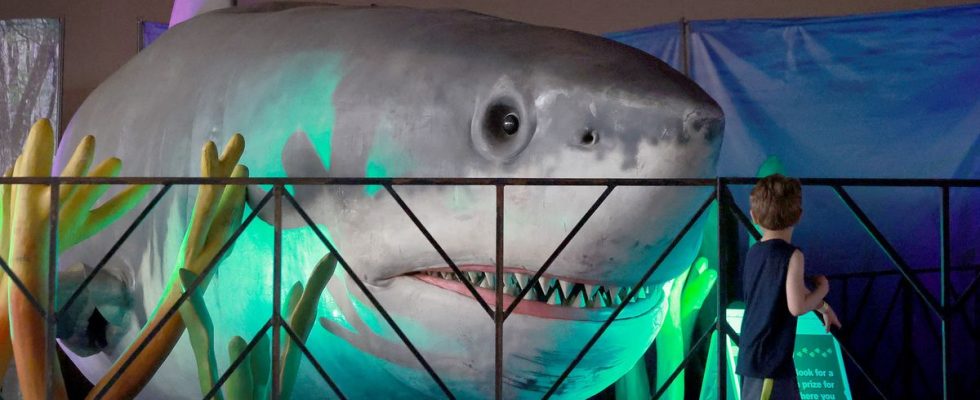If Jaws has become a cult film, not sure that In troubled waters, and its sequel, In very troubled waters, achieve such recognition. In these two blockbusters, Jason Statham attacks gigantic sea monsters over 20 meters long with helicopter blades. Other films take up this fantasy of a super-shark, based on a solid scientific fact: between 23 and 3.6 million years ago lived the megalodon, a shark larger and larger than the great white shark, the largest in existence today. However, an international study published this Monday in the journal Electronic Palaeontology calls into question the corpulence of the megalodon. It would be longer, yes, but not bigger.
Specimens 15 to 20 meters long
There are many doubts about this ancient giant of the seas. For good reason, the only evidence we have to imagine the appearance of extinct species is their fossilized remains: their bones, their teeth. However, the remains of megalodons are extremely rare; only teeth and a few vertebrae have survived. It was the study and analysis of these that allowed teams led by paleobiologist Kenshu Shimada and biologist Phillip Sternes to describe a more slender and longer megalodon. “Our team reexamined the fossil record and discovered that megalodon was much thinner,” Sternes said in a statement. The specimens could reach, according to the researchers, between 15 and 20 meters long (when the shark of the Sea teeth did not exceed 7.5 meters).
Above all, the megalodon would not resemble a white shark that much: “We noted that the vertebrae of megalodon were less similar to the vertebrae of a great white shark than previously thought,” specifies the American biologist from the University of California at Science and Future. It would have looked more like an XXL version of the current mako shark, more stretched, less stocky. Although the megalodon belongs to the family Otodontidae, now extinct, hence its scientific name Otodus megalodon.
Not the strongest swimmer, nor the most skilled
This imposing size means that the megalodon “may not have been a powerful swimmer”, compared to the great white shark, supposes Kenshu Shimada, of DePaul University in Chicago. “It would nonetheless have been a formidable predator, at the top of the marine food chain,” adds Philip Sternes in the same press release. Researchers estimate that it would not have needed to hunt very often, because of a very long digestive tract, in line with its large size. It is the scarcity of prey, and competition with smaller and stockier hunters, which would have caused the disappearance of megalodons. “I believe a combination of factors led to its extinction, but one of them may have been the emergence of the great white shark, which was perhaps more agile, and therefore a better predator,” confirms the biologist.
For now, the megalodon’s exact appearance remains a mystery. Only the discovery of an entire skeleton could move scientists forward. “The fact that we do not know precisely what Otodus megalodon resembled gives free rein to our imagination,” concludes Kenshu Shimada. And Jason Statham can have a field day.

